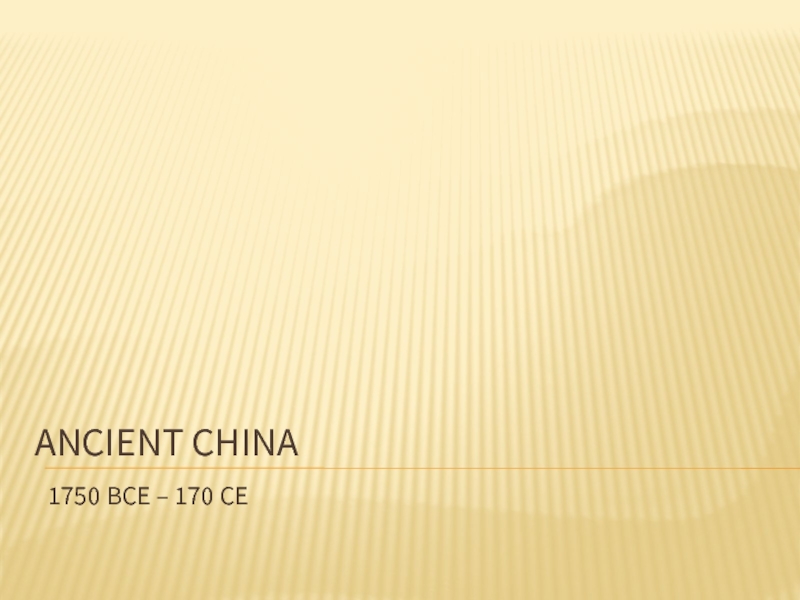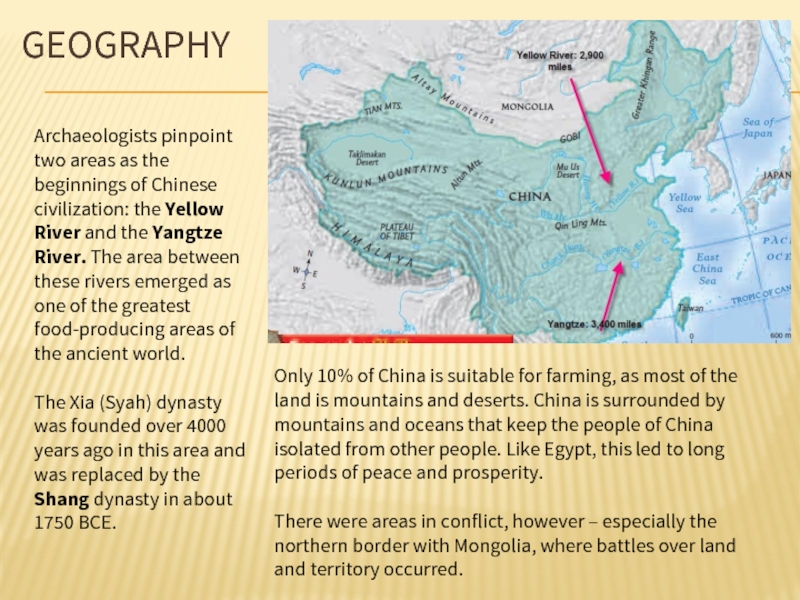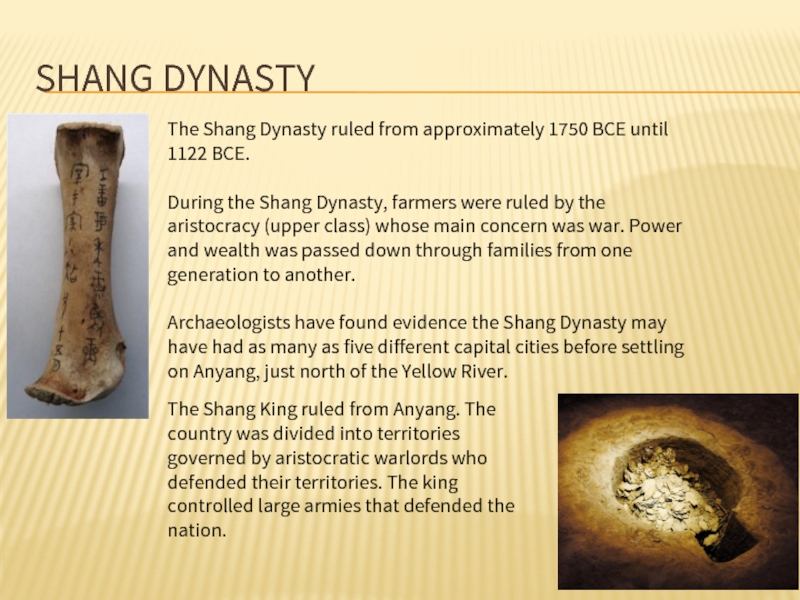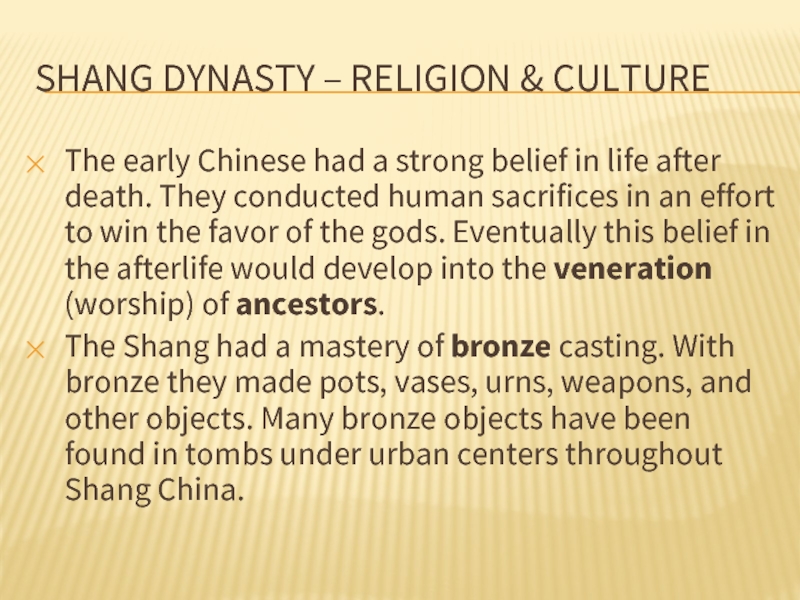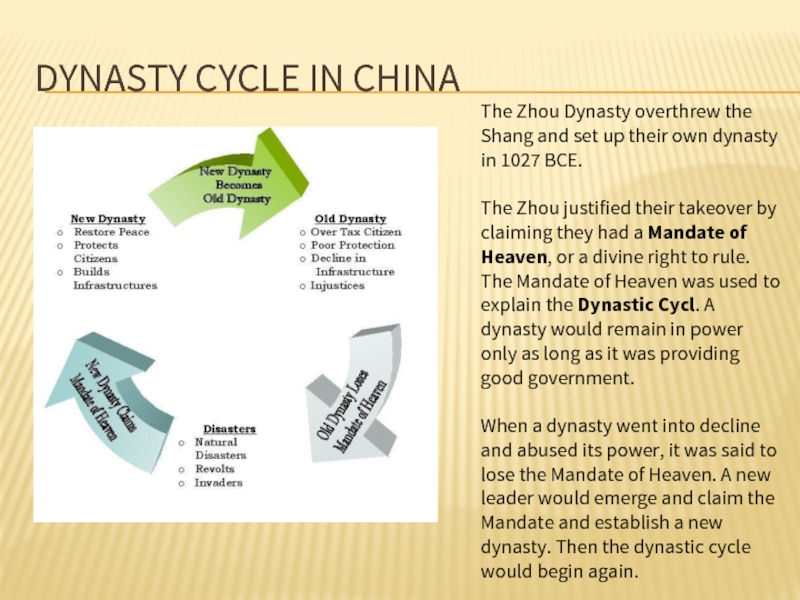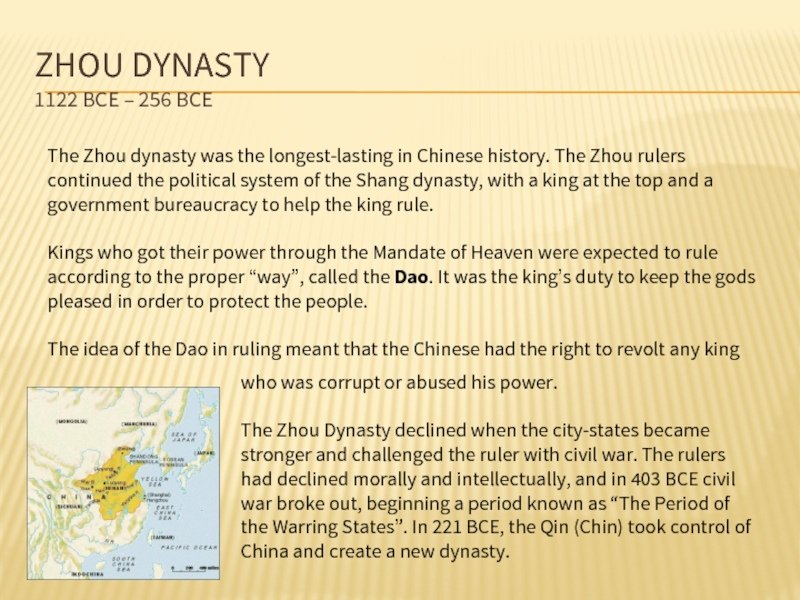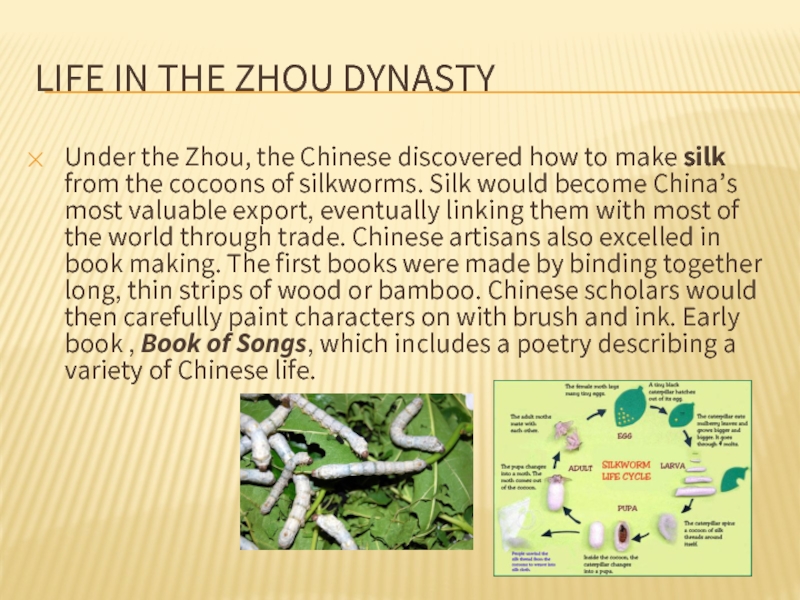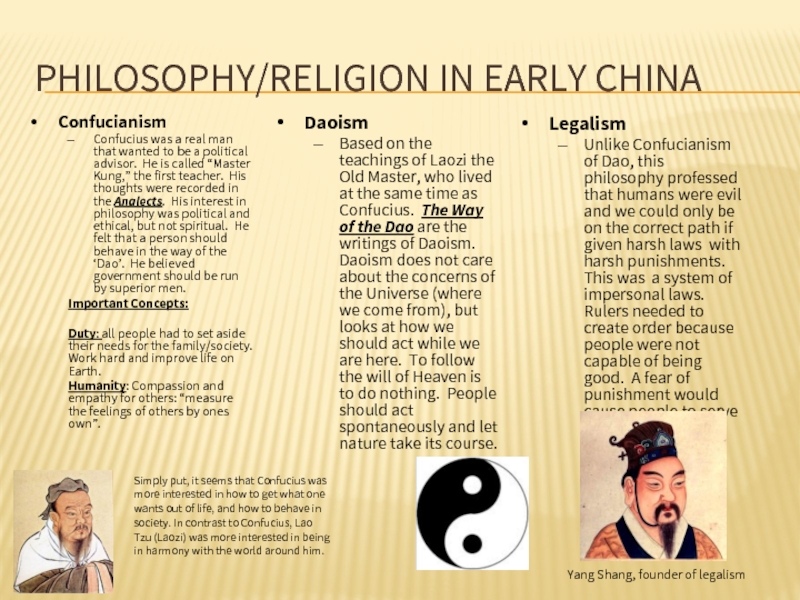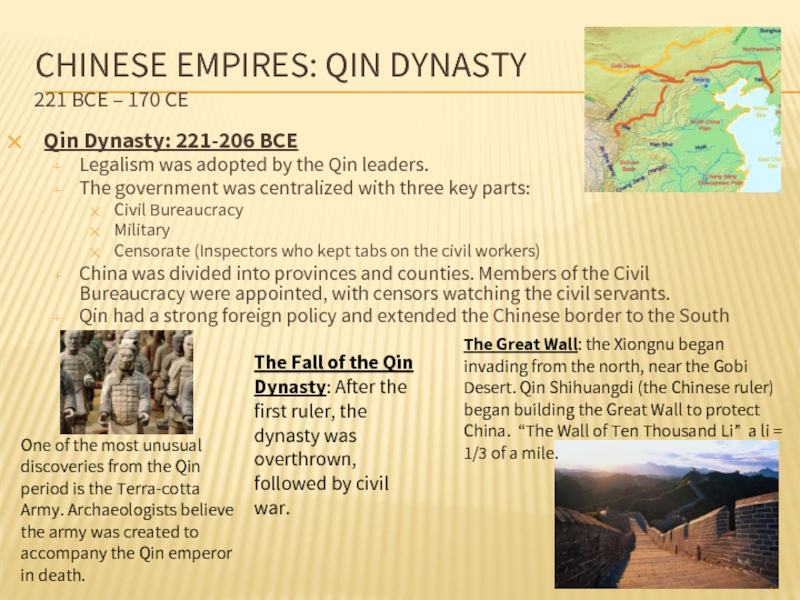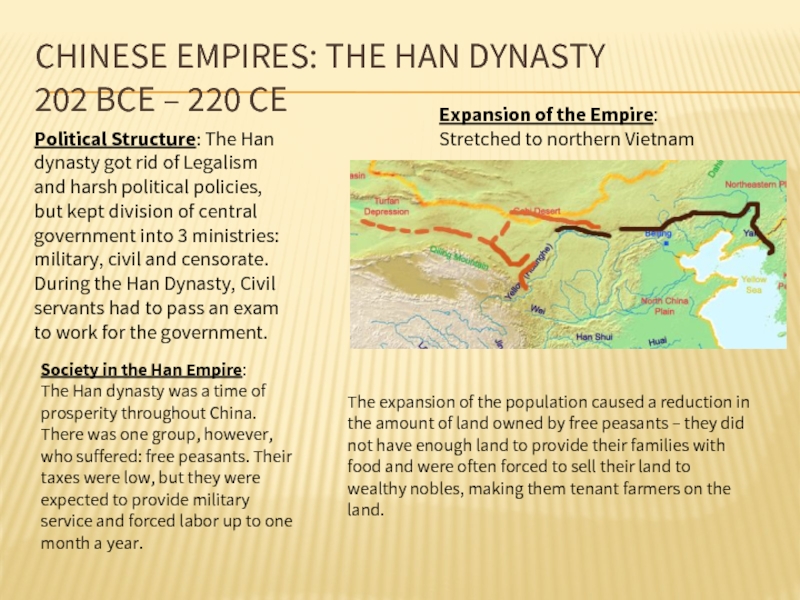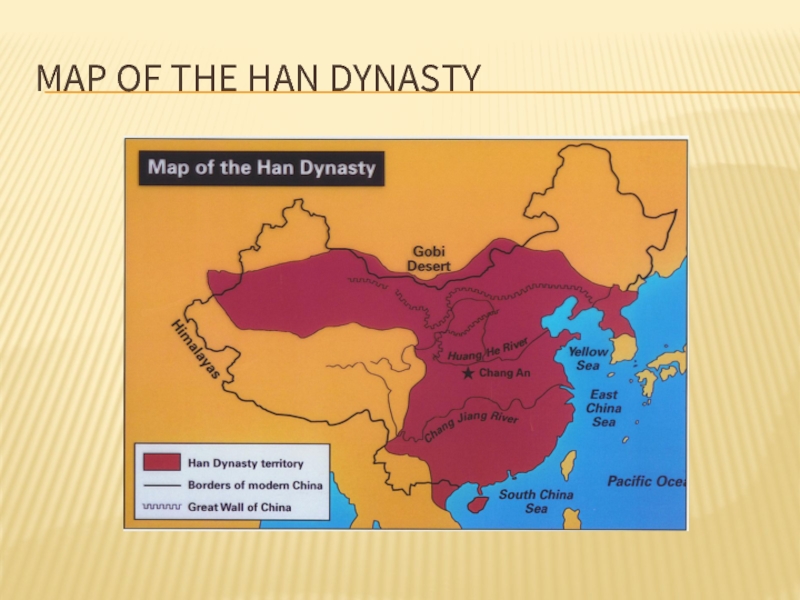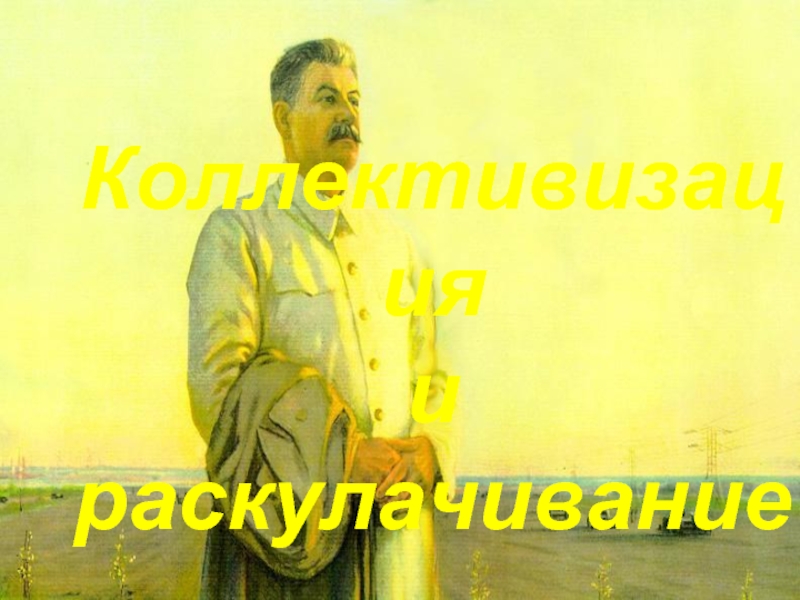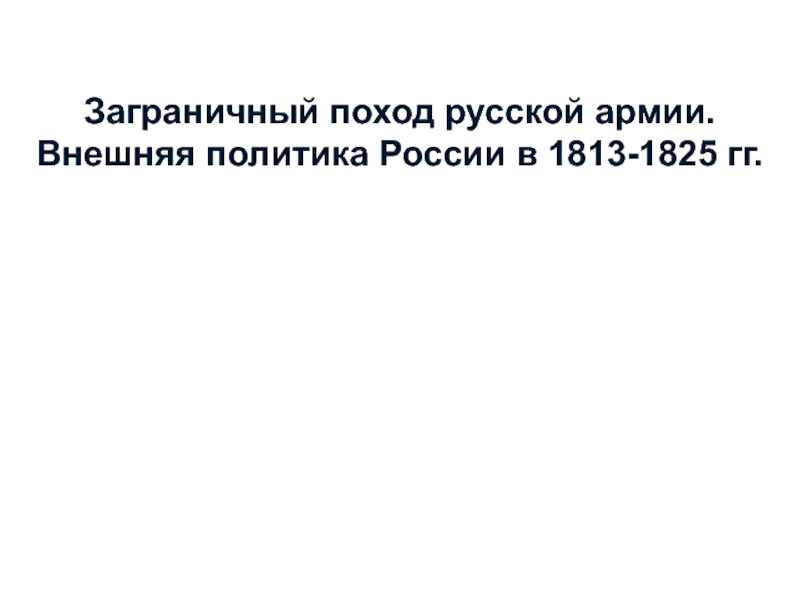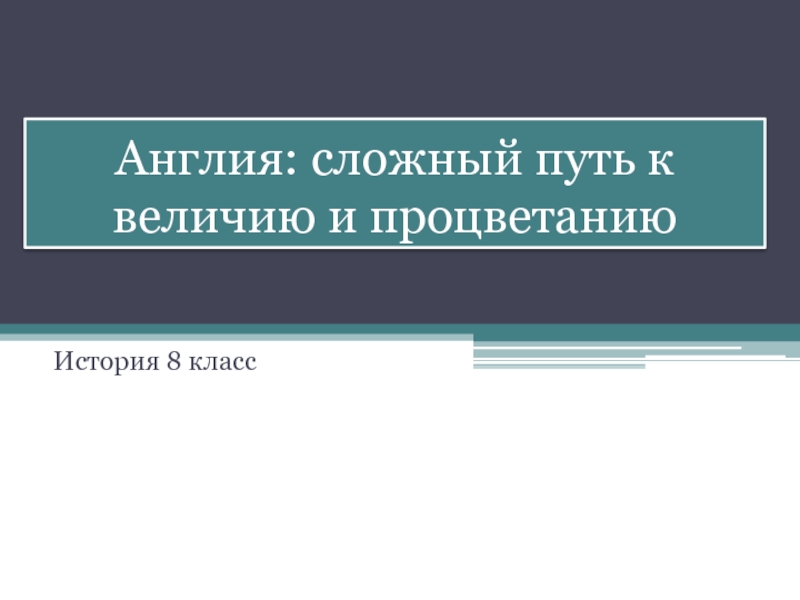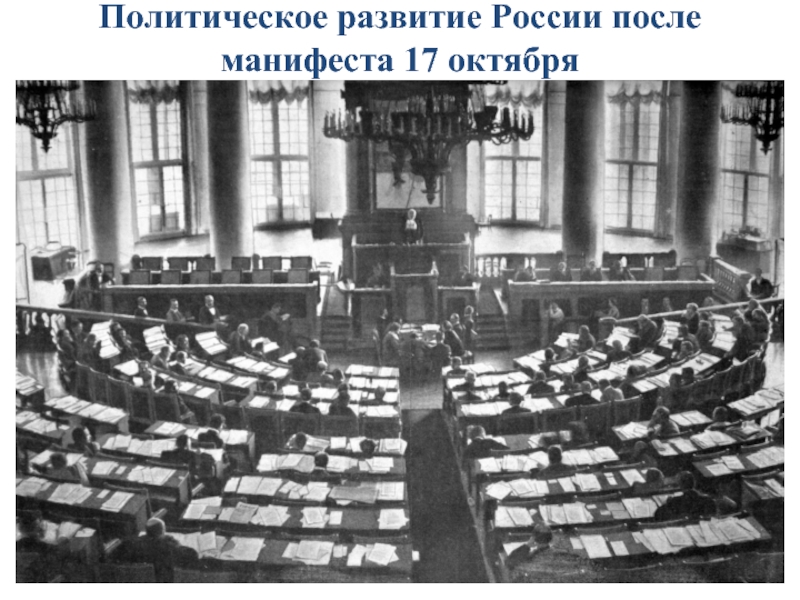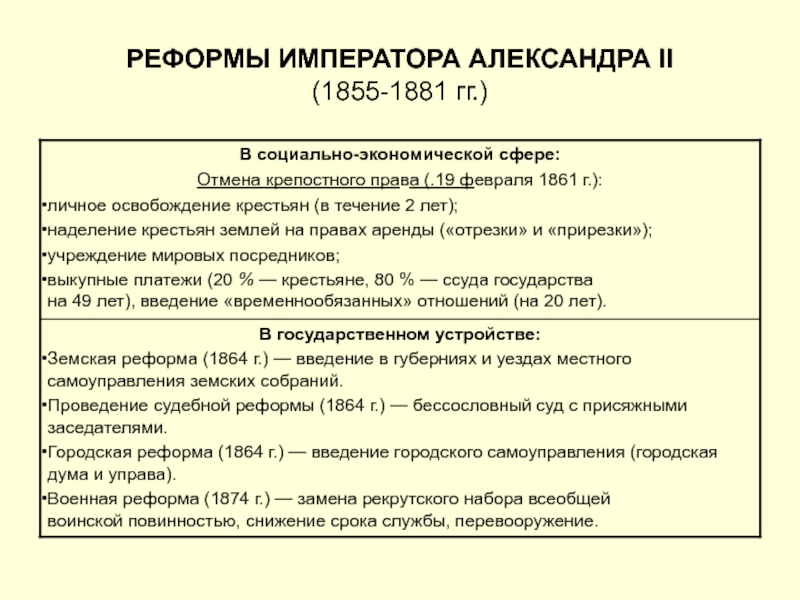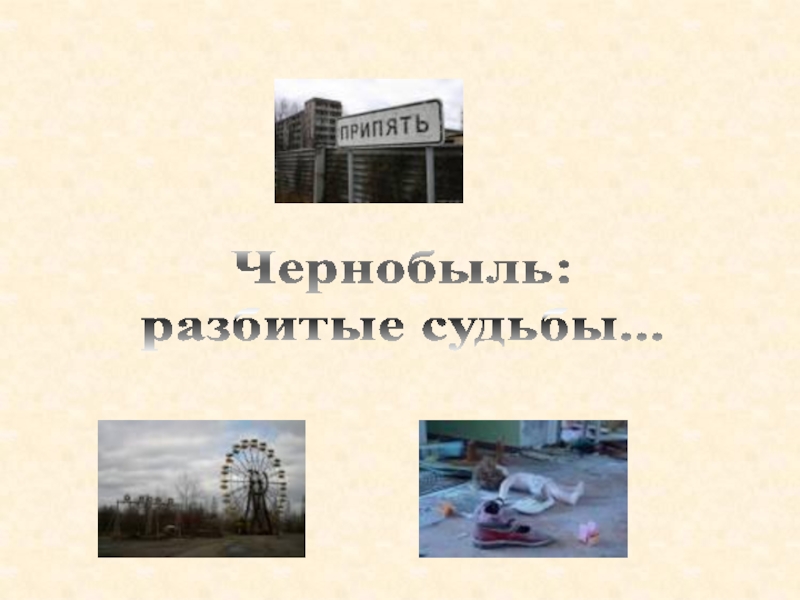- Главная
- Разное
- Дизайн
- Бизнес и предпринимательство
- Аналитика
- Образование
- Развлечения
- Красота и здоровье
- Финансы
- Государство
- Путешествия
- Спорт
- Недвижимость
- Армия
- Графика
- Культурология
- Еда и кулинария
- Лингвистика
- Английский язык
- Астрономия
- Алгебра
- Биология
- География
- Детские презентации
- Информатика
- История
- Литература
- Маркетинг
- Математика
- Медицина
- Менеджмент
- Музыка
- МХК
- Немецкий язык
- ОБЖ
- Обществознание
- Окружающий мир
- Педагогика
- Русский язык
- Технология
- Физика
- Философия
- Химия
- Шаблоны, картинки для презентаций
- Экология
- Экономика
- Юриспруденция
Ancient China. 1750 bce - 170 ce презентация
Содержание
- 1. Ancient China. 1750 bce - 170 ce
- 2. GEOGRAPHY Archaeologists pinpoint two areas as the
- 3. SHANG DYNASTY The Shang Dynasty ruled from
- 4. SHANG DYNASTY – RELIGION & CULTURE The
- 5. DYNASTY CYCLE IN CHINA The Zhou Dynasty
- 6. ZHOU DYNASTY 1122 BCE – 256 BCE
- 7. LIFE IN THE ZHOU DYNASTY Under the
- 8. LIFE IN THE ZHOU DYNASTY Life during
- 9. PHILOSOPHY/RELIGION IN EARLY CHINA Daoism Based on
- 10. CHINESE EMPIRES: QIN DYNASTY 221 BCE –
- 11. MAP OF THE QIN DYNASTY
- 12. CHINESE EMPIRES: THE HAN DYNASTY 202 BCE
- 13. HAN DYNASTY Technology: New technologies helped the
- 14. MAP OF THE HAN DYNASTY
- 15. FALL OF THE HAN DYNASTY – 220
Слайд 2GEOGRAPHY
Archaeologists pinpoint two areas as the beginnings of Chinese civilization: the
The Xia (Syah) dynasty was founded over 4000 years ago in this area and was replaced by the Shang dynasty in about 1750 BCE.
Only 10% of China is suitable for farming, as most of the land is mountains and deserts. China is surrounded by mountains and oceans that keep the people of China isolated from other people. Like Egypt, this led to long periods of peace and prosperity.
There were areas in conflict, however – especially the northern border with Mongolia, where battles over land and territory occurred.
Слайд 3SHANG DYNASTY
The Shang Dynasty ruled from approximately 1750 BCE until 1122
During the Shang Dynasty, farmers were ruled by the aristocracy (upper class) whose main concern was war. Power and wealth was passed down through families from one generation to another.
Archaeologists have found evidence the Shang Dynasty may have had as many as five different capital cities before settling on Anyang, just north of the Yellow River.
The Shang King ruled from Anyang. The country was divided into territories governed by aristocratic warlords who defended their territories. The king controlled large armies that defended the nation.
Слайд 4SHANG DYNASTY – RELIGION & CULTURE
The early Chinese had a strong
The Shang had a mastery of bronze casting. With bronze they made pots, vases, urns, weapons, and other objects. Many bronze objects have been found in tombs under urban centers throughout Shang China.
Слайд 5DYNASTY CYCLE IN CHINA
The Zhou Dynasty overthrew the Shang and set
The Zhou justified their takeover by claiming they had a Mandate of Heaven, or a divine right to rule. The Mandate of Heaven was used to explain the Dynastic Cycl. A dynasty would remain in power only as long as it was providing good government.
When a dynasty went into decline and abused its power, it was said to lose the Mandate of Heaven. A new leader would emerge and claim the Mandate and establish a new dynasty. Then the dynastic cycle would begin again.
Слайд 6ZHOU DYNASTY
1122 BCE – 256 BCE
The Zhou dynasty was the longest-lasting
Kings who got their power through the Mandate of Heaven were expected to rule according to the proper “way”, called the Dao. It was the king’s duty to keep the gods pleased in order to protect the people.
The idea of the Dao in ruling meant that the Chinese had the right to revolt any king
who was corrupt or abused his power.
The Zhou Dynasty declined when the city-states became stronger and challenged the ruler with civil war. The rulers had declined morally and intellectually, and in 403 BCE civil war broke out, beginning a period known as “The Period of the Warring States”. In 221 BCE, the Qin (Chin) took control of China and create a new dynasty.
Слайд 7LIFE IN THE ZHOU DYNASTY
Under the Zhou, the Chinese discovered how
Слайд 8LIFE IN THE ZHOU DYNASTY
Life during the Zhou Dynasty
The Aristocracy owned
The Family in Ancient China
The family was the basic economic and social unit. Filial Piety: son or daughter gives up personal needs to serve male family head. Farming required the entire family, and sons inherited from their fathers. Men were the head of the family.. Women were subordinates, but in the royal family had some influence.
Economic & Technological Growth
6th-3rd centuries BCE were a time of growth. Irrigation controlled water, iron plowshares increased food, Silk was traded.
The Chinese Written Language
Chinese is a primarily pictographic language, which means picture symbols are used to represent an idea. When 2 or more pictographs are used to represent an idea it is called ideographic writing. Most other languages started using symbols that represented phonetics, or letter sounds. China has never completely abandoned using pictures in their writinggg.
Слайд 9PHILOSOPHY/RELIGION IN EARLY CHINA
Daoism
Based on the teachings of Laozi the Old
Legalism
Unlike Confucianism of Dao, this philosophy professed that humans were evil and we could only be on the correct path if given harsh laws with harsh punishments. This was a system of impersonal laws. Rulers needed to create order because people were not capable of being good. A fear of punishment would cause people to serve the ruler.
Confucianism
Confucius was a real man that wanted to be a political advisor. He is called “Master Kung,” the first teacher. His thoughts were recorded in the Analects. His interest in philosophy was political and ethical, but not spiritual. He felt that a person should behave in the way of the ‘Dao’. He believed government should be run by superior men.
Important Concepts:
Duty: all people had to set aside their needs for the family/society. Work hard and improve life on Earth.
Humanity: Compassion and empathy for others: “measure the feelings of others by ones own”.
Simply put, it seems that Confucius was more interested in how to get what one wants out of life, and how to behave in society. In contrast to Confucius, Lao Tzu (Laozi) was more interested in being in harmony with the world around him.
Yang Shang, founder of legalism
Слайд 10CHINESE EMPIRES: QIN DYNASTY
221 BCE – 170 CE
Qin Dynasty: 221-206 BCE
Legalism
The government was centralized with three key parts:
Civil Bureaucracy
Military
Censorate (Inspectors who kept tabs on the civil workers)
China was divided into provinces and counties. Members of the Civil Bureaucracy were appointed, with censors watching the civil servants.
Qin had a strong foreign policy and extended the Chinese border to the South
The Great Wall: the Xiongnu began invading from the north, near the Gobi Desert. Qin Shihuangdi (the Chinese ruler) began building the Great Wall to protect China. “The Wall of Ten Thousand Li” a li = 1/3 of a mile.
The Fall of the Qin Dynasty: After the first ruler, the dynasty was overthrown, followed by civil war.
One of the most unusual discoveries from the Qin period is the Terra-cotta Army. Archaeologists believe the army was created to accompany the Qin emperor in death.
Слайд 12CHINESE EMPIRES: THE HAN DYNASTY
202 BCE – 220 CE
Political Structure: The
Expansion of the Empire: Stretched to northern Vietnam
Society in the Han Empire:
The Han dynasty was a time of prosperity throughout China. There was one group, however, who suffered: free peasants. Their taxes were low, but they were expected to provide military service and forced labor up to one month a year.
The expansion of the population caused a reduction in the amount of land owned by free peasants – they did not have enough land to provide their families with food and were often forced to sell their land to wealthy nobles, making them tenant farmers on the land.
Слайд 13HAN DYNASTY
Technology:
New technologies helped the Han dynasty prosper. The Chinese developed
The most notable technology was the invention of paper during the Han dynasty.
Silk Manufacturing
Ship rudders (at bottom left) helped steer ships.
Water mills were used for grinding grain and casting iron
